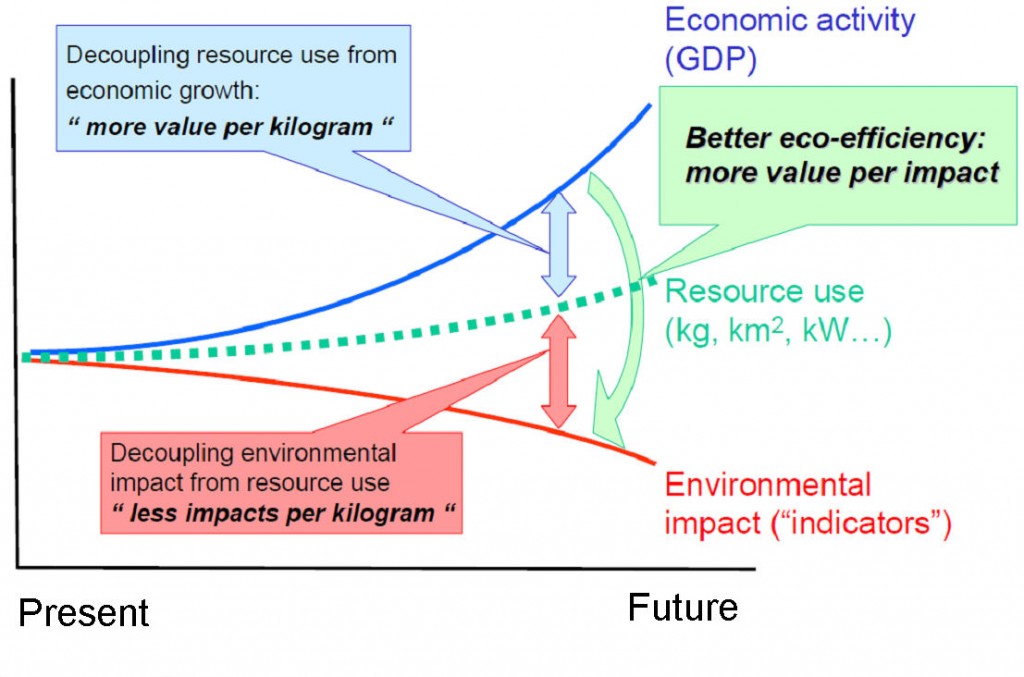Some definitions of Eco-efficiency
By Emma Ringström & Johan Widheden
1. ISO/DIS 14045
The ISO/DIS 14045 declares: “Eco-efficiency is a quantitative management tool that enables the consideration of life cycle environmental impacts of a product system alongside its product system value to a stakeholder”.
The draft standard defines eco-efficiency as “an aspect of sustainability relating the environmental performance of a product system to its product system value”.
2. World Business Council for Sustainable Development, WBCSD
WBCSD defines eco-efficiency as: “Eco-efficiency is achieved by the delivery of competitively-priced goods and services that satisfy human needs and bring quality of life, while progressively reducing ecological impacts and resource intensity throughout the life-cycle to a level at least in line with the earth s estimated carrying capacity.” In short, it is concerned with creating more value with less impact.
The following three objectives are defined by the World Business Council for Sustainable Development (WBCSD) regarding Eco-efficiency.
- Reduce the consumption of resources. The material and energy consumption should be reduced through enhancing recyclability. Producing products with higher quality and longer life times may also lead to improvements within the area.
- Reduce the impact on nature. Improvements can be performed using renewable resources which are sustainably managed as well as minimizing emissions, waste disposal and toxic substances.
- Provide customers with higher quality products and services. The customer benefit can be improved through providing the user additional services of the product such as e.g. functionality or/and increased overall life time. It is however important that higher customer benefit must not interfere with the two former objectives.
3. OECD
The OECD has called eco-efficiency “the efficiency with which ecological
resources are used to meet human needs” and defines it as a ratio of an
output (the value of products and services produced by a firm, sector, or
economy as a whole) divided by the input (the sum of environmental
pressures generated by the firm, the sector, or the economy).
4. European Environment Agency
 The European Environment Agency defines it as “A concept and strategy enabling sufficient delinking of the ‘use of nature’ from economic activity needed to meet human needs (welfare) to allow it to remain within carrying capacities; and to permit equitable access and use of the environment by current and future generations” – more welfare from less nature” (see Figure 1)
The European Environment Agency defines it as “A concept and strategy enabling sufficient delinking of the ‘use of nature’ from economic activity needed to meet human needs (welfare) to allow it to remain within carrying capacities; and to permit equitable access and use of the environment by current and future generations” – more welfare from less nature” (see Figure 1)
Differences between the definitions
There are two main differences between the definition of Eco-efficiency used by companies and the original definition by the WBCSD:
- There is no absolute but a relative reference in the EEA used by business. This means that products are compared to each other and not to the carrying capacity of the earth.
- There are also no normative elements in this definition of EEA (Huppes and Ishikawa 2005). Therefore an EEA can never say which production method that is good or bad for the environment or economy, only whether it is better or worse.

